Bluewater builds back better for the new customer journey
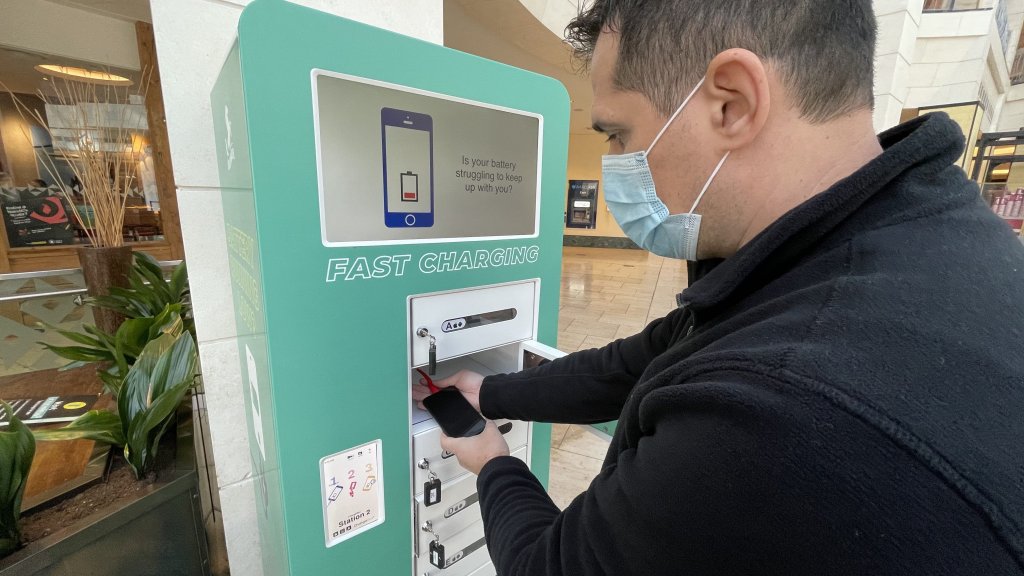
The first shopping centre in Europe to offer its shoppers free, fast mobile device charging
London, UK: ChargeBox today announced a new partnership with Bluewater, one of Europe’s leading retail and leisure destinations to offer its guests free, fast mobile device charging.
Bluewater is the first retail destination in Europe to offer ChargeBox’s Fast Charge technology which is up to 4 times faster than most shoppers are used to at home*. Therefore a device can be charged from zero to 50% in just 30 minutes, with no cost attached.
Bluewater recognises the importance of keeping their guests connected and that there are few things as irritating or anxiety-inducing as having a low phone battery. The phone is critical to the customer journey and central to the new experiences and technologies being deployed by retailers, from AR gamification to automated mobile checkout. The exponential growth in mobile proximity payments as a convenient alternative to cash post-pandemic gives additional importance to having a charged device.
Ian Hobson, CEO at ChargeBox, says, “We’re thrilled to be providing our brand new, market-leading fast charging solution at Bluewater. They recognise the importance of mobile devices in the shopper journey and are leading the way in improving the shopper experience post-pandemic.”
Robert Goodman, Director of Regional Shopping Centres, Landsec, says “We are always looking at innovative solutions to enhance experiences and to ensure our guests are fully catered for throughout their visit at Bluewater. ChargeBox will provide an additional service and complement the concierge, click and collect elements also available whilst providing connectivity for all.”
The benefits of this new partnership include:
· Improving the guest experience post-pandemic
· Supporting new consumer journeys reliant on mobile devices
· Surprising and delighting Bluewater visitors
About ChargeBox:
Since 2005, ChargeBox has led the way in providing secure out-of-home charging for mobile devices. We are the experts in helping companies keep their customers charged and connected and support mobile technology’s new demands.
Our clients benefit by improving customer satisfaction and loyalty, increasing footfall and spend while ensuring their customers can always use their smartphone for payments, information, coupons, and critical apps. As a result, customers experience reduced stress and anxiety from low batteries and feel safe in the comfort of knowing they can securely charge their phone and stay connected to their loved ones.
About Bluewater:
Bluewater, Europe’s leading retail and leisure destination, offers great shopping with free, extra wide parking and has over 300 stores and more than 50 places to eat and drink. Plus, with a 17 screen Showcase Cinema de Lux including IMAX, Gravity Trampoline Park and Dinotropolis Giant Soft Play, there’s something for everyone.
Find out more at bluewater.co.uk
*using a standard 5W charger
About Landsec:
At Landsec, we strive to connect communities, realise potential and deliver sustainable places.
As one of the largest real estate companies in Europe, our £10.8 billion portfolio of well-connected retail, leisure, workspace and residential hubs. From the iconic Piccadilly Lights in the West End and the regeneration of London’s Victoria, to the creation of retail destinations at Westgate Oxford and Trinity Leeds reduction and climate resilience. We deliver value for our shareholders, great experiences for our customers and positive change, we own and manage some of the most successful and memorable real estate in the UK.
We aim to lead our industry in critical long-term issues – from diversity and community employment, to carbon for our communities.
Find out more at landsec.com
The future of retail is being re-imagined – Part 1 Augmented Reality
Imagine the scenario. As you approach a new wine on the store shelf, you are immersed in a holographic environment. You find yourself stood in Burgundy, as a grower shows you where his grapes come from, before transporting you to his winery, where he prepares them for fermentation. Welcome to live holographic sales pitches from the producers.
The concept of a Store of the Future has long existed but is now more pertinent than ever. New technology will be an essential element of the Store of the Future, but it’s not only about using new technologies. Whether individually or collectively – experiential, technological, physical and location are all vital elements.

Retail has traditionally been a transactional environment, but now shoppers frequently want to experience as much as they do to buy. So starting with the customer need, brands are considering the experiences and services that will delight and surprise shoppers while importantly supporting the new customer journey.
The phone is critical to the customer journey and central to the new experiences and technologies being deployed by brands, from AR gamification to automated mobile checkout. In this series of blogs, we look at how mobile technology is helping shape the future of the physical store. Starting with an immersive technology which although not new, is one of the most innovative ways stores can combine the physical and digital experience for consumers. No, it’s not live holograms just yet but Augmented Reality (AR).
For the uninitiated augmented reality is a technology viewed through your smartphone that superimposes a computer-generated image on a user’s view of the real world, thus providing a composite view. AR technology has been around for a while, but apart from the brief Pokémon Go craze (remember those Emo zombies walking around your local park on a Saturday?), it has never quite become mainstream.
Some retail brands have dipped their toe in the virtual water, but are we at the point of the early majority? And will the synchronicity of 5G connectivity and the launch of AR apps or functionalities from the likes of Google or Apple give AR the chance to flourish finally?
A 2020 report from Unibail Rodamco Westfield ‘How We Shop: The Next Decade’ predicts that by 2025 more than half of all retail space in stores will be dedicated to providing experiences because shoppers want to escape from the mundane and are excited by the prospect of escapist experiences. AR is one solution to offer those escapist experiences.
Technology is both a threat and an opportunity for retailers. Today a whopping 92.6% of internet users worldwide use their mobile device to browse online, whilst global spending on mobile applications has risen from $57.7 billion in 2016 to $143 billion in 2020.
It is clear consumers want to use their mobile devices to search price comparisons, look for offers and product information, transact payments seamlessly, and learn from other customer reviews. The ability to share satisfaction or dissatisfaction with the brand in real-time in-store presents challenges for retailers.
Technology also gives the consumer a high degree of efficiency whilst shopping that they are coming to enjoy. But retailers do not necessarily want their consumers to experience efficiency while shopping. For example, in a supermarket, shoppers’ paths often cover less than 50% of the available floor space, but unplanned purchases typically make up around half of the items in their baskets. Either most people’s shopping lists are loosely defined, or they are easily influenced by promotions and displays in-store. Therefore, if AR in retail helps shoppers stay on task and experience increased efficiency, the impact on unplanned purchases and revenues will likely be negative.
But the reverse is more likely. Retailers should embrace AR technology to increase overall spending through unplanned purchases, which can be promoted by encouraging longer consumer shopping paths or increasing dwell time. AR applications can provide retailers with a powerful tool in the form of real-time information from the shopper. Any digital cues can be acted upon to provide customers with real-time mobile promotions designed to encourage unplanned purchases. Implementing AR in-store can dramatically enhance the experience and give shoppers access to enriched product information or virtual product demonstrations to increase purchase certainty.
Research has shown that interactivity and informative content are the key attributes of AR applications that influence consumers instead of any potential entertainment value that the apps may provide. So, how does that compare to what’s happening with today’s retail innovators, and what tactics are they using to attract and engage their audience?
Nike provides shoppers with an augmented reality-based challenge that looks to re-create the feeling of visiting Smith Rock State Park in Oregon at its “House of Innovation” store in New York City. They are gamifying the in-store experience encouraging customers to search around the store for AR and QR codes to unlock information about local wildlife and their outdoor products. On successful completion of the challenge, customers receive a physical gift. Nike is combining interactivity, information and entertainment, and it will be interesting to see if they roll out the concept to other House of Innovation stores globally.
Gucci is one of a handful of luxury brands experimenting globally with AR. They recently launched their virtual sneakers, which at $12 a pair are either a steal or daylight robbery depending on where and when you plan to wear them. Gucci also celebrated the Lunar New Year with a collection dedicated to the Japanese Manga character Doraemon brought to life in-store on the Gucci App thanks to AR. By scanning Gucci ArtWalls and the dedicated packaging, customers will discover the Doraemon character bought to life.

In a more prosaic but certainly informative and interactive way, beauty retailers such as Sephora and Ulta have turned to AR to help customers digitally test beauty products and help in buying decisions. Virtual try-on experiences are an excellent use case for AR in retail heightened by COVID and the increased focus on hygiene. If customers can’t physically test makeup products on their skin, then AR has got to be the next best alternative.
Lastly, and as big Snapchat fans at ChargeBox, one of our favourite examples of utilising AR technology is Burberry’s partnership with Snapchat to promote their Animal Kingdom pop-ups celebrating signature bags and accessories. Burberry has also partnered with Wildlife Works to make the pop-ups carbon neutral. Customers scan Snapcodes for the wildlife around them to come to life, along with informative content about sustainability and conservation. Snapchatters can then create their own content and share it with their network.
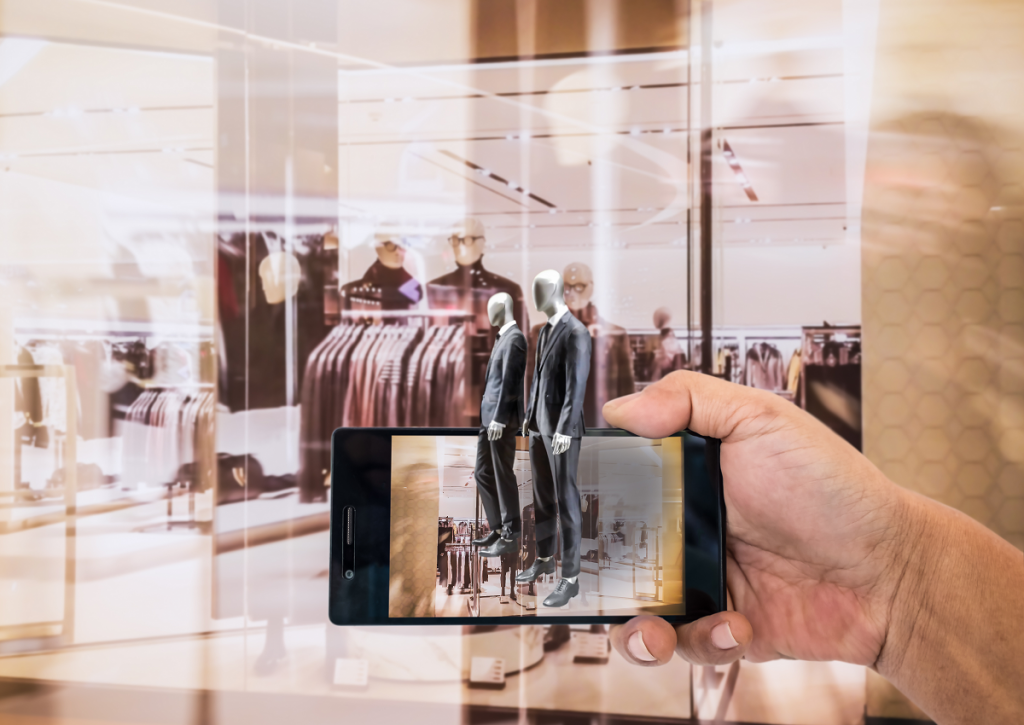
As these examples demonstrate, the smartphone is the centre of a consumer’s universe to enable these exciting experiences, which will be used in a multitude of ways to heighten the senses, drive engagement and improve the shopping experience in-store. Using their phones, consumers can shop and engage everywhere they go. In response, retailers must operate smart stores that can anticipate, sense and interact with customers everywhere they go — inside and outside of the store.
So until the time we are able to be treated to holographic wine producers in their Burgundy vineyards or a craftsman of handmade shoes in their studio we’re excited to see how the use of AR develops in retail, are you?
The ChargeBox Story
Since 2005, ChargeBox has led the way in providing secure out-of-home charging for mobile devices. We are the experts in helping companies keep their customers charged and connected and support mobile technology’s new demands.
Our clients benefit by improving customer satisfaction and loyalty, increasing footfall and spend while ensuring their customers can always use their smartphone for payments, information, coupons, and critical apps. As a result, customers experience reduced stress and anxiety from low batteries and feel safe in the comfort of knowing they can securely charge mobile devices and stay connected to their loved ones.
Mobile devices are essential to the customer journey and central to brands’ new experiences and technologies. Support your future customer journeys, and don’t let a dwindling phone battery inhibit your customers from embracing change.
ChargeBox plays its part in the fight against Coronavirus
In the fight against COVID-19, three words, hands, face, space, are all imprinted on our minds, but there is one other invisible weapon against the virus that consumers might not be quite so familiar with – antimicrobial coatings.
Coronavirus can be transmitted through air particles, but common touchpoints such as ATM screens, self-service checkouts and mobile charging stations can be high-risk areas where the virus can be passed from one carrier to another. Consumers now expect these shared facilities to be scrupulously sanitised, and thankfully most retailers and business owners are committed to doing this to ensure their customers’ safety and improve their customer experience. However, this additional cleaning does add an extra cost and burden to business owners when times are already tough and may result in lost sales due to delays.
Are antimicrobial coatings a quick and simple solution to fighting viruses and bacteria?
Antimicrobial coating technology offers both piece of mind to consumers and reduces the responsibility of businesses having to deep clean high risk shared surfaces after each use.
Liquid Guard is an award-winning and innovative provider of antimicrobial technology. The effectiveness of the wipe-on coating has been independently verified and is proven to kill 11 viruses and bacteria including SARS-CoV-2, TGEV Coronavirus and Influenza A.
How easy is it to apply Liquid Guard?
ChargeBox have unreservedly implemented the use of Liquid Guard to all new sales of their mobile charging equipment in an effort to help fight the transmission of Coronavirus and offer greater peace of mind and a safer customer experience to consumers.
Every ChargeBox we manufacture has now been treated with the Liquid Guard antimicrobial coating in the following way:
- All areas are first thoroughly cleaned.
- A primer coating is then applied followed by a ‘buffing’ process.
- The Liquid Guard top treatment coat is applied and buffed again.
- The charging station is closed for use for a further 6 hours to allow the coating to fully cure.
It’s not just the exterior of the ChargeBox that is treated, each of the following parts are also cleaned, primed and protected to ensure maximum protection to ChargeBox users:
- Cable endings are one of the main touch points in any charging station, so these are all now thoroughly treated with Liquid Guard. Replacement cables, if needed, are pre-coated before installation.
- Locker mats, where consumers rest their devices, are pre-treated at the ChargeBox factory and then inserted onsite when lockers are being treated.
- Each key and key fob is fully coated. If we ever replace the lock and key/key fob we replace them with protected replacements.
- All edges, doors, screens and surfaces are treated with as much care and attention as the locker’s major contact areas.
Does an antimicrobial coating offer long-lasting protection?
One of the major concerns is the longevity of the treatment. The good news is that after application the coating is effective for more than one year. Standard regular cleaning does not hamper the effectiveness of the coating, in fact tests have proven that it actually enhances it.
Can the use of antimicrobial coatings offer another effective weapon in the fight against Coronavirus?
Although touching contaminated surfaces is not considered to be the main way the Coronavirus spreads, studies have shown that traces of it can linger on plastic surfaces for up to 72 hours. Many consumers are, justifiably, nervous of using shared facilities for fear of contracting Covid-19. The development of antimicrobial coatings and their application to shared devices such as ChargeBox charging stations is a game changer, offering extra protection and greater peace of mind for staff, consumers and business owners.
Is Apple Magsafe the future of phone charging?
When Apple announced the iPhone12 range in September 2020, the big focus was on 5G. However, at ChargeBox, we got excited about another new piece of technology now embedded in all the latest iPhones - MagSafe charging.
Could Apple MagSafe offer a more convenient solution for public mobile charging?
As a pioneer of out-of-home, public phone charging solutions, we’ve learned a great deal over the years about making our solutions easy to use, reliable, fast, safe and secure. Our research has shown that less than 20% of people carry a charging cable at any particular time, and even less have their charger. So, since the beginning, all our solutions have included manufacturer-approved cables, meaning that anyone can get a charge.
Will MagSafe mean it’s time to say a final farewell to cables?
The downside of using cables is the cables themselves.
- Cables evolve frequently.
- Cables can be fiddly to use.
- Cables have a finite life.
Cables are just not designed for high volume public use, so one of our biggest challenges has been keeping cables working reliably.
We have developed techniques to protect the cables. Our 3rd generation protection is a sophisticated moulding technique that we call X-Ten, because it extends a cables life by up to 10 times. But still, tips break, cables eventually wear and having to provide three cable types - Apple Lightning, Micro-USB and USB-C - contributes to higher component costs.
Wouldn’t it be great if we didn’t need cables at all? We could deliver a more reliable charging experience and at a lower cost to our customers. The resulting savings from increased reliability would mean more places would be able to offer their customers this essential service.
We believe that MagSafe will allow us to do that and presents the possible future of phone charging.
Is MagSafe the key to providing efficient, reliable wireless charging?
Before MagSafe, traditional wireless charging was unreliable and often inefficient. Most phones charged at speeds considerably lower than when connected with a cable. While you can forgive this experience at home overnight, putting this solution in public spaces, when time is of the essence, results in a less than satisfactory customer experience.
With MagSafe, the simple addition of magnets into the device and charger pad transforms wireless charging. The magnets reliably align the device and charging pad every time and in any orientation. Keeping the phone and charger connected throughout the charge, even if using the phone, or if the phone is vibrating with a call, is a game changer.
MagSafe converts an unreliable and inefficient wireless charging solution into an experience as dependable as a cable, and while not quite as fast as the fastest charging, it comes pretty close. In our tests, MagSafe adds 17% battery in just 10 minutes, compared with less than 7% using a standard 5W cable charger (a common default charger for most phones).
The reliability and speed of MagSafe are why it will be the future for out-of-home, public charging solutions. One day you’ll be able to say, ‘Remember needing a charging cable?’. We won’t need them anymore, or their propensity to deteriorate, or their high cost.
When will ChargeBox deliver its first charging solutions with MagSafe?
We already have! A world first! MTR Crossrail is our first customer providing both fast charge via cables and an incredible MagSafe experience for compatible phones.
We’ve always used the best and the most compatible products to make our solutions the safest experience. For that reason, we’re taking the MagSafe product and embedding it into our solutions. You’ll now find Apple’s MagSafe adapter protected within our wireless pad design. It’s powered by our USB-C based FastCharge system, which provides all the power that MagSafe needs to charge your phone fast.
MagSafe and ChargeBox – a new world for wireless charging.
We are super-excited by the opportunity for public charging solutions using MagSafe. It opens up so many more opportunities to put them where people need them and at a cost that is affordable to even more partners.
Go on, provide a free phone charging service for your customers, they’ll love you for it, and it’ll keep them returning again and again.
Learn more about the ChargeBox USB-C FastCharge Solution now with MagSafe
https://www.chargebox.com/charging-solutions-chargebox-fast/
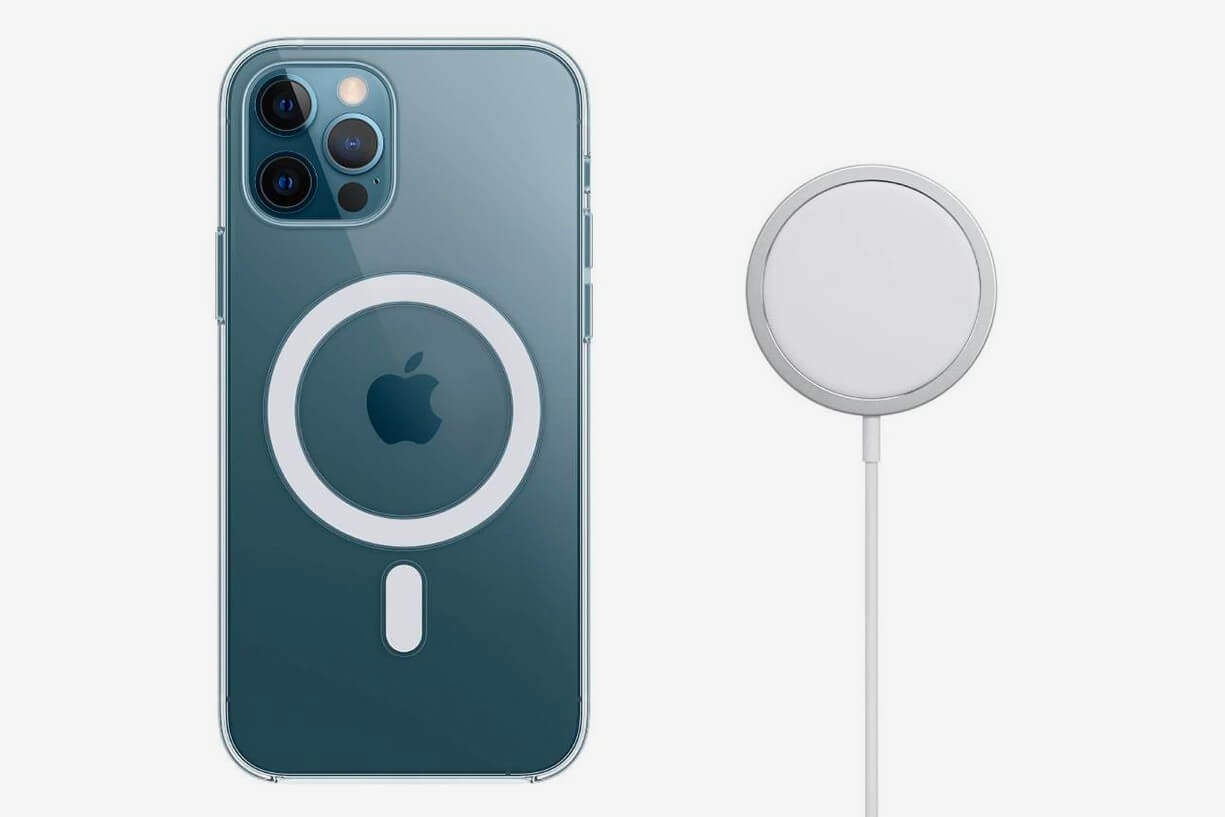
image from apple
Odeon Cinema implements ChargeBox lockers to support phoneless movie screening
Odeon is trialling phoneless movie screenings. Film goers often get frustrated with others in the cinema using/looking at their phones during a film. In a darkened cinema, the light from a single mobile device stands out like a sore thumb and is distracting for other moviegoers, who, let's face it, have paid good money to sit back, relax and enjoy the film.
Odeon says that 47% of Brits go to the cinema to relax but don't fully switch off when watching a film with 1 in 4 admitting they look at theirs phones during the show.
Odeon Cinema implements 60 ChargeBox lockers
The trial is taking place at Odeon's Greenwich cinema in December 2019 where the chain has installed 60 phone charging lockers provided by ChargeBox. Moviegoers get 30 minutes of free charging whilst their phones are locked away during the film.
See the full story featured on:
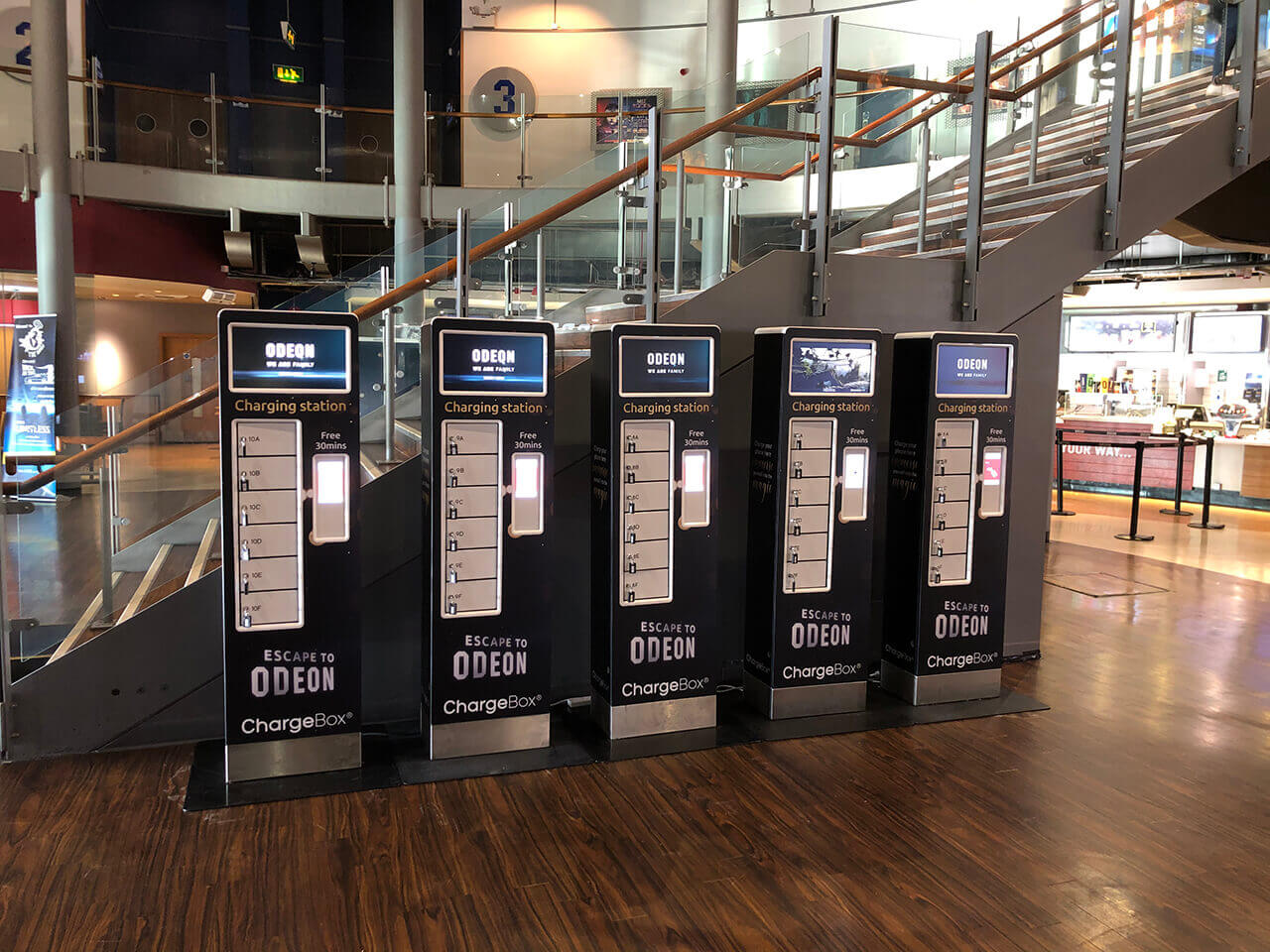
Unlocking the customer experience in the store of the future
The Coronavirus pandemic brought unprecedented pressures to the retail sector. When it was already struggling with crippling business rates, Brexit uncertainty, and price wars from online challengers, COVID arrived and closed down most traditional High Street retail sectors almost overnight.
In just 12 months, retailers, from major brands to small independents, have had to adapt their business models and look for new ways to attract consumers and improve the physical experience.
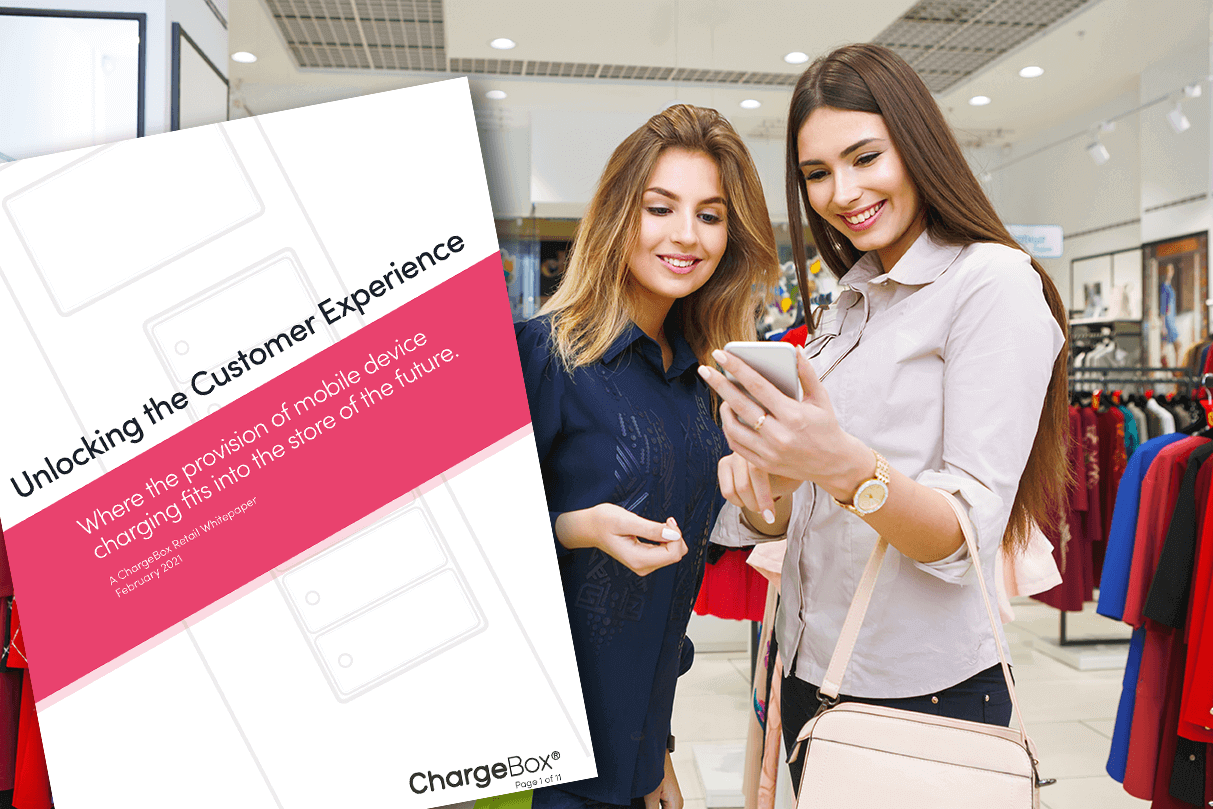
A Blagger’s guide to fast charge – 10 questions answered.
If you’ve upgraded your iPhone in the last 2-3 years from Apple or bought a high-end Samsung or Google phone then the chances are it has the latest USB Fast charging standard included in the hardware. But what is fast charging and why should you care?

What is Fast Charging?
The technical name is USB 3.1 Power Delivery. The people friendly term is “Fast Charge” and makes it possible to charge devices at up to 100W. It means that you can charge your phone 2-4 times faster now. You’d expect to get 50% charge in 30 minutes.
So, if I’m stuck at an airport and think I’ll run out of battery before I need to get my electronic boarding pass out, I could get 10% battery in about 5 minutes?
Yes! But then no, because public places have yet to cotton on to this.
Do I need any specific equipment for fast charge?
Fast charge requires 3 components – a compatible phone/tablet/laptop or other device, a charger that supports USB Fast charge, and a compatible cable. The cable will have USB-C at least on the charger end, and either USB-C or Apple Lightning on the device end. The latest iPhone 11 Pro comes with these components. For public charging solutions you will need a Fast charge system or a USB-C socket branded as Fast charge and using your own cable.
So, can devices with Micro-USB use Fast Charge?
No, only devices with USB-C or Apple devices since 2017 with Lightning can use Fast Charge.
Isn’t wireless charging quick and better?
Wireless requires your phone to be placed precisely to get the best performance. Fast charge is still 2-4 times faster than this method and is more reliable. Wireless is better than nothing, and fine for overnight charging, but not ideal for public charging.
Is Fast charge safe?
All modern devices control the power input to suit the devices battery characteristics. Manufacturer testing ensures the device takes the right amount of power at different battery charge levels to maximise the safe charge rate while maintaining long-term battery health. You will notice when phones go beyond 80-90% charge, they charge much more slowly as this is when the phone will deliberately slow down the charge rate.
Is fast charge just on phones?
Many tablets (including all newly available iPad models) support a higher level of fast charging. iPads may use up to 30W, which is 3 times faster than the old base charger in the box, or 1.5 times faster than the charger that ships with iPad Pro. Lots of laptops also support fast charging using USB-C cables too.
I don’t have one of the big brand handsets but I thought I had a fast charge already.
You might do if it’s a less well-known Chinese brands, but it’s more than likely not using the international standard set by the USB Implementers Forum. That means you will not benefit from public fast charging systems, and the proprietary nature of the technology means it might not hit all the safety standards.
So where could I charge my phone in a hurry when I’m out and about?
Look for USB-C plug points and charging stations with fast charge installed. Public spaces like shopping centres and airports have special charging stations but few have adopted this technology. They will need to start investing in it soon because there will be demand from the public. If you find the charging facilities don’t cater for it then ask for it. In the meantime, all ChargeBox public charging solutions provide optimised USB charging at up to 10W per cable which will typically exceed most other public charging solutions.
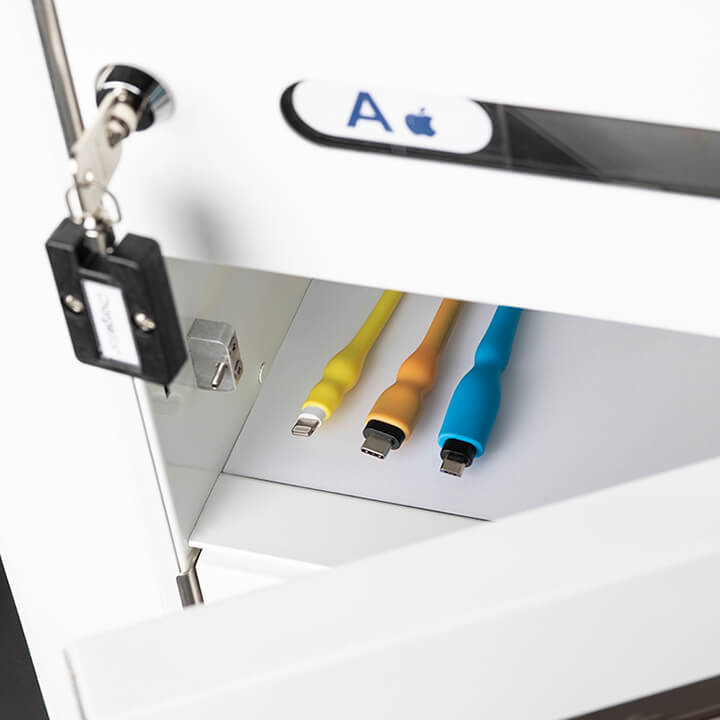
All ChargeBox Solutions have the option to include Fast Charge for your visitors.
ChargeBox launches new national outdoor media concept to capitalise on the 768m annual shopping visits made to the UK’s largest shopping centres
ChargeBox, the out-of-home mobile device charging specialist, has today launched a new concept in sponsored outdoor advertising for brands that want to reach the millions of people visiting the UK’s largest and busiest shopping centres.
The launch comes as the company announces that ChargeBox has charged over 37 million devices world-wide, keeping people connected at major retail outlets, transport hubs, sporting events, festivals, exhibitions and more.
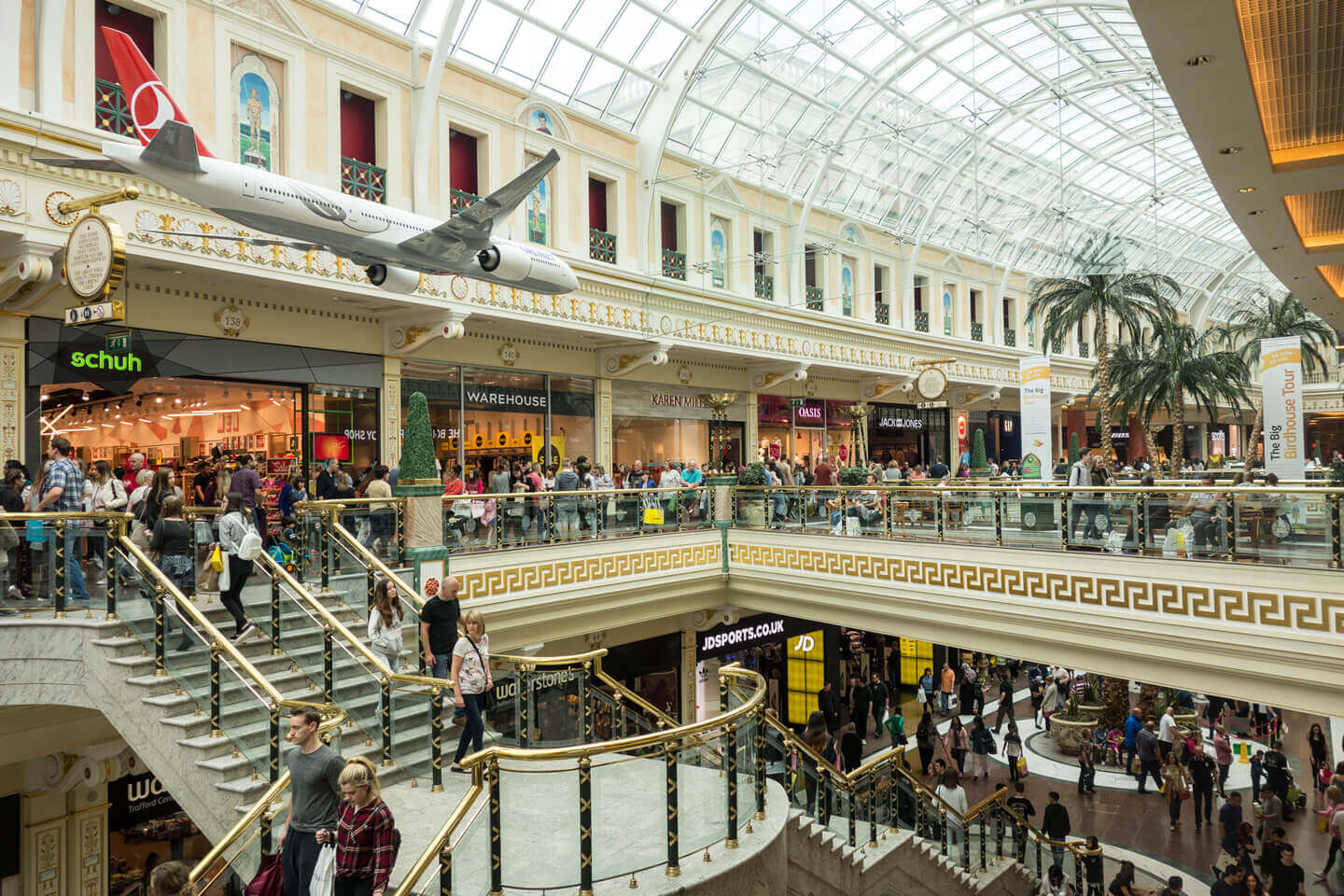
As part of a one-year sponsorship deal, companies will be able to exclusively wrap 126 ‘lock and leave’ ChargeBox mobile device charging stations in 41 of the UK’s largest and busiest shopping centres with their brand, product or service.
The free-to-use ChargeBox stations at the selected shopping centres have already delivered more than 11 million charges. With an average charge lasting 21 minutes, ChargeBox has added at least an extra 3.85 million hours of customer dwell time across the centres.
The stations are permanently located at centres owned by Westfield, British Land, CBRE, Hammerson, Intu and Land Securities and offer a perfect way to blend advertising and sponsorship in a way not seen before. ChargeBox units can be wrapped to a brand’s exact requirements and customised so that shoppers see tailor-made messaging on the vinyl wraps. The wraps can be changed as necessary, so they are seasonal or tie in with other major promotions or product launches the brand is running.
The digital screens on the units can also be used to promote offers and display promotions or QR codes and can be updated as often as the brand likes, with the option to capture information with simple research questions.

This unique concept gives brands an opportunity to combine the benefits of digital outdoor media with a way to deliver experiential marketing in a very unique way, explains Justin Stark, Director, at ChargeBox: “Studies at Intu Lakeside* show that 76% of shoppers admit that they feel anxious if they can’t use their phone and that for 61% of them the option to have access to a ‘lock and leave’ ChargeBox influences their decision to visit the centre.
“What’s more for 94% of Intu shoppers, using the charging service enhances their shopping experience. 56% will spend more time and money at the centre as a result of using the ChargeBox stations, over a third buy more, and almost a fifth will spend time eating and drinking in the shopping centre.”
“Now brands can exclusively associate themselves with an established well-loved service, and be recognised as the brand that is delivering the ‘feel-good’ feeling that comes from our free charging service. It makes their brand engaging and useful to shoppers in a way that other advertising and sponsorship deals can’t. Plus, they can further leverage their investment by running promotions on the ChargeBox screens that are relevant to the types of shoppers visiting the centre throughout the day or week.”
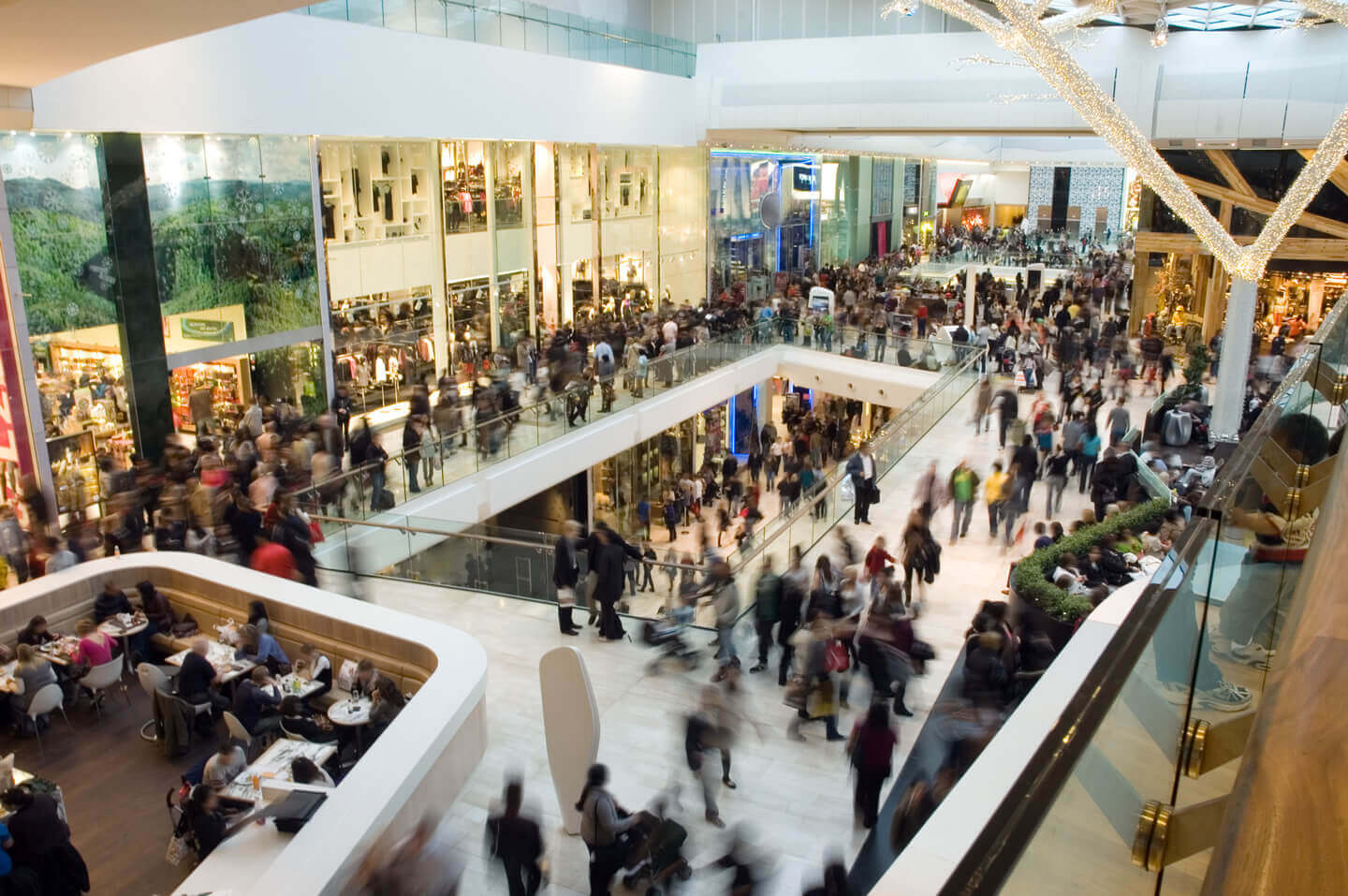
Justin adds that the opportunity with ChargeBox could grow further across their other other sectors, which include transport, healthcare and education: “It’s a unique opportunity for a brand to effectively own public charging in the UK.”
Take a look at our dedicated retail sponsorship offer.
Apple is raising security levels with iOS 12
iPhone users with iOS12 or later may see messages prompting them to unlock their phones when plugging into ChargeBox charging stations.
Since the San Bernardino shooting in 2015, and the ensuing legal battle with Apple, there is a constant tug-of-war between the California tech giant and governments around the world about encryption and security.
The Governments try to compel Apple to create special software or loopholes that would allow them to access data on a locked iPhone in cases where they see it for the greater good of the public. Apple, on the other hand, is adamant not to compromise on its customer’s privacy.
In the meantime, there are third party suppliers of hacking devices that allow law enforcement to circumvent iOS encryptions and access things like lists of phone calls, emails or contacts.
The exact inner workings of such hacking devices are not publicly known, but Apple tries to curb their use nevertheless with changes in their security protocol.

When a phone is plugged into any form of USB device with a potential data connection, you will receive the following message: “Unlock iPhone to use accessories”. Before the phone is unlocked, no data transfer whatsoever is allowed. From an individual’s privacy perspective, this is a great move, and here at ChargeBox, we certainly applaud this development.
However, this brings a new set of issues for customers of our public charging stations. ChargeBox very much values every user’s privacy. We are fully compliant with the new GDPR guidelines and would never attempt to take personal data of any phone plugged into one of our stations. However, to ensure the best USB optimized charging experience, there is some standardized data transfer between devices and our charging hubs, negotiating charging capabilities and speeds. You can see more on our privacy policy page which is here.
This means, anyone using our charging stations that has iOS 12 or newer installed, will be prompted with a message that could wrongfully raise privacy and/or security concerns. You will receive a charge irrespective of whether you unlock or not, but it will help us to serve you better, especially in the rare event of any challenges you have such as losing your key.
Rest assured, we have only ever cared about optimally charging your phone, and always will!

How smart technology is key to improving the passenger experience within airports
Worldwide airports are always looking at ways to improve the passenger experience, and it is clear that introducing smart technology is a way of achieving this. Travellers are becoming increasingly reliant on their devices to guide them through their journey. They are not only using their devices to pass the time but also for mobile ticket, live travel updates, mobile payments and mobility platforms such as Uber.

In a recent article by the Financial Times "Airports fight back against online turbulence", it reported that Singapore's Changi's Terminal 4 building is embracing smart technology to improve passenger experience but also help drive revenues.
Over the past 5 years, ChargeBox have been working with one of the world's busiest airports, Paris Charles de Gaulle Airport, to provide free mobile device charging to their passengers. With 49 stations installed and over 2.5 million charges delivered since installation, Paris Aéroport is heavily invested in improvising the passenger experience.
"Our customers appreciate the simplicity of using ChargeBox, thanks to the presence of the smart lock and the instructions which are universally intuitive." - Marketing & Services Manager, Paris Aéroport.

Research has shown that having a low battery increases anxiety levels, leaving travellers feeling dissatisfied. Edward Arkwright, Deputy Chief Executive Officer for Groupe Aéroports de Paris stated that "The worse situation for retail is a worse passenger experience...if we improve customer experience, we will improve all economic models."
In the ChargeBox Return on Investment Study, it was shown that people who used ChargeBox spend on average £35 more than those who didn't and 92% of users felt positively/very positively towards the brand.

Providing charging services alongside smart technology is vital to alleviating the stress that comes with travelling, it enhances the overall customer experience and powers the travellers engagement.
Who said the high street is dead?
High street stores have always faced certain challenges, but the current retail climate has seen some of the best known brands disappear from the high street altogether. In this changing marketplace it is the innovative and forward thinking retailers that are continuing to thrive in these difficult times.
In today's digital world consumers are visiting stores less, and shopping online more. So what can the high street do to entice customers back through their doors? While there isn't just one solution, we at ChargeBox believe that providing a positive customer experience is key for retailers to differentiate themselves from their competition.

The Digital High Street 2020 Report released in 2015, states that "because consumers have compelling digital options, physical stores are making their locations interactive and engaging in order to attract footfall and justify costs of stores operations."
As the market leaders in public device charging, we've always known how impactful providing a charging service can be for retailers. We recently commissioned an independent study in conjunction with a major British department store to measure this impact on customer behaviour.

The findings not only demonstrated that shoppers who used a ChargeBox stayed nearly half an hour longer but also saw the average spend of a user increase by £35. Offering charging services clearly enhances the customer experience, but also provides a measurable ROI for the retailer.
Smart retailers are realising that it's no longer just about the products they offer, but more importantly it's about the entire shopping experience. These additional services are the key to retaining their loyal customers, and gaining new ones.
"At Fenwick we are focused on providing outstanding customer experience and a great in-store experience. Providing free charging via our ChargeBoxes is one way we deliver this."

Whilst figures indicate a decline in the retail sector, having a physical store presence is still vital for large retail brands and it's clear that retailers must adapt and evolve in order to thrive. Providing a positive in-store customer experience in this fast moving digital age will drive footfall, brand loyalty and ensure the survival of the high street.